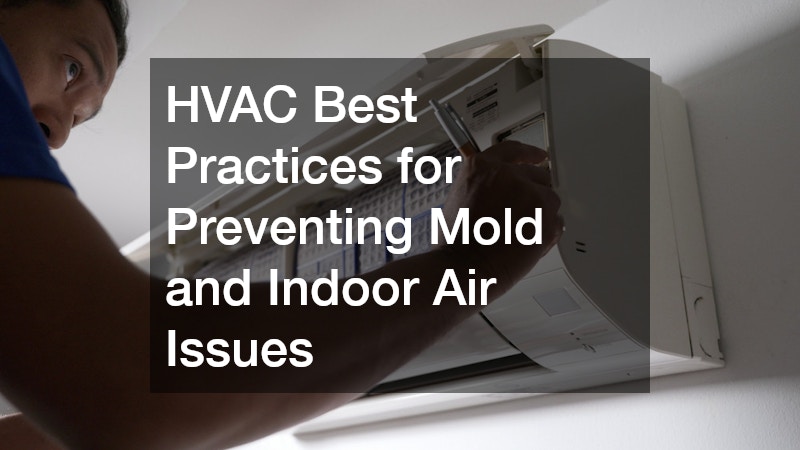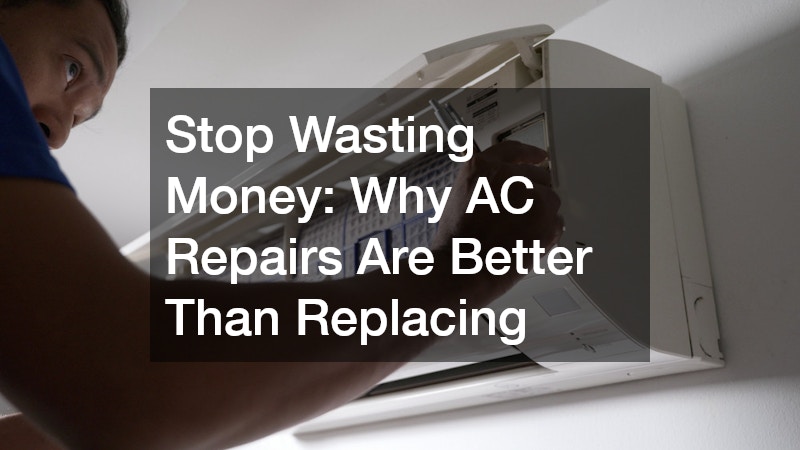When it comes to maintaining a healthy indoor environment, proper HVAC practices are essential. HVAC systems play a crucial role in controlling temperature, humidity, and air quality in buildings. However, if HVAC systems are not properly maintained, they can contribute to mold growth, which can lead to a variety of health issues. In this article, we will explore how HVAC systems can contribute to mold growth and discuss best practices for preventing mold growth in HVAC systems.
How HVAC Systems Contribute to Mold Growth
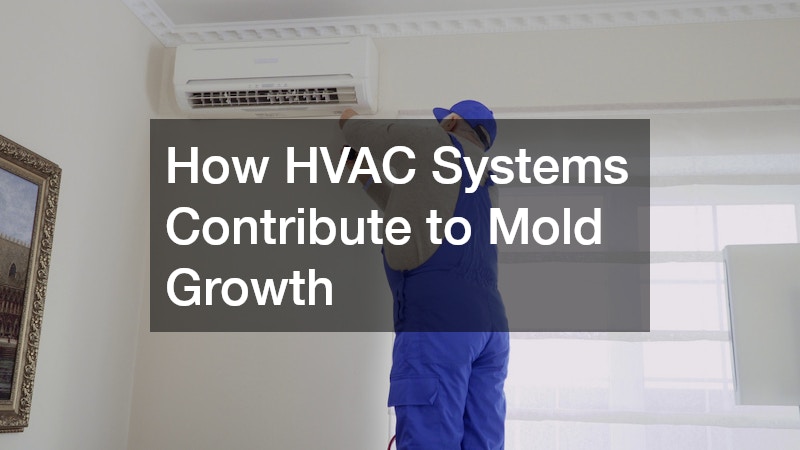
HVAC companies play a key role in ensuring that HVAC systems are functioning properly and efficiently. However, if HVAC systems are not regularly maintained, they can become a breeding ground for mold. Mold thrives in damp, dark environments, and HVAC systems provide the perfect conditions for mold growth. When mold spores are circulated through the air by the HVAC system, they can easily spread throughout a building and cause respiratory issues.
To prevent mold growth in HVAC systems, HVAC companies should prioritize regular maintenance and inspections. This includes cleaning and sanitizing HVAC components, checking for leaks or moisture buildup, and ensuring that air filters are replaced regularly. By following HVAC best practices, HVAC companies can help prevent mold growth and maintain a healthy indoor environment for building occupants.
It is also important for HVAC companies to educate their clients about the importance of proper maintenance and the potential risks of mold growth in HVAC systems. By raising awareness about mold prevention strategies and best practices, HVAC companies can help their clients take proactive steps to protect their health and well-being.
The Role of Poor Maintenance
An HVAC company that neglects regular maintenance of HVAC systems can inadvertently contribute to mold growth. Poor maintenance can lead to issues such as clogged air filters, dirty air ducts, and malfunctioning condensate drains, all of which can create ideal conditions for mold to thrive. When HVAC systems are not properly cleaned and maintained, mold spores can accumulate and spread quickly throughout a building.
To prevent mold growth due to poor maintenance, HVAC companies should prioritize regular inspections and cleaning of HVAC components. This includes checking for leaks, removing any debris or blockages from air ducts, and ensuring that condensate drains are functioning properly. By addressing maintenance issues promptly and following HVAC best practices, HVAC companies can help prevent mold growth and ensure the longevity and efficiency of HVAC systems.
Additionally, HVAC companies should emphasize the importance of routine maintenance to their clients and provide recommendations for scheduling regular inspections and cleanings. By educating clients about the role of maintenance in preventing mold growth, HVAC companies can empower building owners to take proactive steps to protect their indoor air quality.
Regular Filter Replacement
One of the most important HVAC best practices for preventing mold growth is regular filter replacement. Air filters play a crucial role in trapping dust, allergens, and mold spores from circulating through the HVAC system. However, if air filters are not replaced on a regular basis, they can become clogged with debris and allow mold spores to accumulate.
HVAC services should recommend that air filters be replaced every 1-3 months, depending on the filter type and the level of contaminants in the indoor environment. By following this simple maintenance task, building owners can improve the air quality in their buildings and reduce the risk of mold growth in HVAC systems. Regular filter replacement is a cost-effective way to maintain a healthy indoor environment and prevent mold-related health issues.
In addition to replacing air filters, HVAC services should also inspect air filters during routine maintenance visits to identify any signs of mold growth or contamination. By staying proactive and addressing filter issues promptly, HVAC services can help prevent mold growth and ensure that HVAC systems are functioning optimally.
Cleaning Air Ducts and Vents
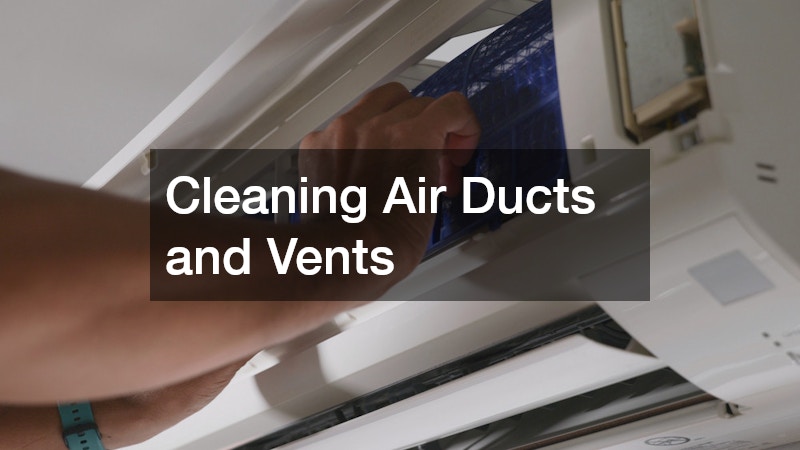
Another important HVAC best practice for preventing mold growth is cleaning air ducts and vents on a regular basis. Over time, dust, debris, and mold spores can accumulate in air ducts and vents, creating an ideal environment for mold growth. When HVAC systems circulate air through dirty ductwork, mold spores can be spread throughout a building and pose a health risk to occupants.
HV AC contractors should recommend that air ducts and vents be cleaned every 3-5 years to remove any buildup of contaminants and prevent mold growth. Professional duct cleaning services can remove mold spores, dust, and other pollutants from ductwork, improving air quality and reducing the risk of mold-related health issues. By investing in regular duct cleaning, building owners can maintain a clean and healthy indoor environment.
During duct cleaning appointments, HVAC contractors should also inspect ductwork for signs of moisture or leaks, as these can contribute to mold growth. By identifying and addressing potential issues early on, HVAC contractors can help prevent mold growth and ensure that HVAC systems are operating efficiently.
Maintaining Condensate Drains
HVAC technicians play a crucial role in maintaining condensate drains to prevent mold growth in HVAC systems. Condensate drains remove excess moisture from HVAC units, preventing water buildup that can lead to mold growth. However, if condensate drains become clogged or blocked, water can accumulate and create a breeding ground for mold.
To prevent mold growth due to condensate drain issues, HVAC technicians should inspect and clean condensate drains during routine maintenance visits. By removing any debris or blockages from condensate drains, HVAC technicians can ensure that water is properly draining and reduce the risk of mold growth. Regular maintenance of condensate drains is essential for preventing mold-related health issues and maintaining the efficiency of HVAC systems.
HVAC technicians should also educate building owners about the importance of condensate drain maintenance and provide recommendations for keeping condensate drains clean and free of obstructions. By following best practices for condensate drain maintenance, building owners can help prevent mold growth and protect their indoor air quality.
Inspecting Coils and Drain Pans
Proper maintenance of HVAC coils and drain pans is essential for preventing mold growth in HVAC systems. Coils and drain pans can become dirty or contaminated over time, providing a food source for mold spores to thrive. When mold spores accumulate on coils and drain pans, they can be circulated through the air by the HVAC system and pose a health risk to building occupants.
Air conditioning repair services should prioritize regular inspection and cleaning of coils and drain pans to prevent mold growth. This includes removing any buildup of dirt, dust, or contaminants from coils and drain pans and ensuring that they are functioning properly. By addressing coil and drain pan issues promptly, air conditioning repair services can help prevent mold growth and maintain a healthy indoor environment.
During maintenance visits, air conditioning repair services should also check for signs of moisture or leaks around coils and drain pans, as these can indicate potential mold growth. By staying vigilant and addressing maintenance issues as they arise, air conditioning repair services can help prevent mold-related health issues and ensure the longevity of HVAC systems.
Using a Dehumidifier

In addition to regular maintenance and cleaning, using a dehumidifier can help prevent mold growth in HVAC systems. Dehumidifiers remove excess moisture from the air, reducing humidity levels and creating an inhospitable environment for mold. By maintaining optimal humidity levels in a building, dehumidifiers can help prevent mold spores from germinating and spreading throughout HVAC systems.
Heating and AC repair services should recommend that building owners use dehumidifiers in areas prone to high humidity, such as basements, attics, or bathrooms. By controlling humidity levels, building owners can reduce the risk of mold growth and maintain a healthy indoor environment. Using a dehumidifier in conjunction with regular HVAC maintenance can provide added protection against mold-related health issues.
Heating and AC repair services should also advise building owners on proper dehumidifier maintenance, such as emptying the water reservoir regularly and cleaning the unit to prevent mold growth. By following best practices for dehumidifier use and maintenance, building owners can help prevent mold growth and ensure the effectiveness of their HVAC systems.
Proper Ventilation Practices
Proper ventilation is essential for preventing mold growth in HVAC systems. Inadequate ventilation can trap moisture and pollutants indoors, creating a conducive environment for mold to grow. By ensuring that buildings are well-ventilated, HVAC contractors can reduce the risk of mold growth and maintain a healthy indoor environment for occupants.
Heating and cooling contractors should recommend that building owners open windows and doors regularly to allow fresh air to circulate and reduce humidity levels. Additionally, HVAC contractors can install ventilation systems, such as exhaust fans or air exchangers, to improve air circulation and remove excess moisture from indoor spaces. By promoting proper ventilation practices, heating and cooling contractors can help prevent mold-related health issues and improve indoor air quality.
Proper ventilation practices should be followed in conjunction with regular HVAC maintenance to maximize the effectiveness of mold prevention strategies. By addressing ventilation issues and maintaining HVAC systems, heating and cooling contractors can create a healthy and comfortable indoor environment for building occupants.
Sealing Leaks and Insulating Ducts
Sealing leaks and insulating ducts are critical components of preventing mold growth in HVAC systems. Leaky ductwork can allow moisture to enter the HVAC system, creating conditions for mold to thrive. By sealing leaks and insulating ducts, HVAC replacement services can reduce the risk of mold growth and improve the efficiency of HVAC systems.
HVAC replacement services should inspect ductwork for signs of leaks or damage and seal any gaps or cracks to prevent moisture infiltration. By insulating ducts in unconditioned spaces, such as attics or crawlspaces, HVAC replacement services can prevent condensation from forming on ductwork and reduce the risk of mold growth. Proper duct sealing and insulation are essential for maintaining a healthy indoor environment and preventing mold-related health issues.
In addition to sealing leaks and insulating ducts, HVAC replacement services should also check for proper airflow and ventilation in ductwork to ensure that HVAC systems are operating efficiently. By following HVAC best practices for duct sealing and insulation, HVAC replacement services can help prevent mold growth and improve the overall performance of HVAC systems.
Seasonal HVAC Inspections
Seasonal HVAC inspections are an important part of preventing mold growth in HVAC systems. HVAC systems undergo wear and tear throughout the year, and regular inspections can help identify maintenance issues before they lead to mold growth. By scheduling seasonal HVAC inspections, ac contractors can ensure that HVAC systems are functioning properly and reduce the risk of mold-related health issues.
During seasonal HVAC inspections, ac contractors should check for signs of moisture buildup, leaks, or other issues that can contribute to mold growth. By identifying and addressing maintenance issues early on with HVAC best practices, ac contractors can help prevent mold growth and maintain a healthy indoor environment for building occupants. Seasonal HVAC inspections are a proactive measure that can save building owners time and money in the long run.
To promote the importance of seasonal HVAC inspections, ac contractors should provide maintenance plans and reminders to their clients. By encouraging regular maintenance and inspections, ac contractors can help prevent mold growth and ensure the longevity of HVAC systems.
Using UV Lights in HVAC Systems
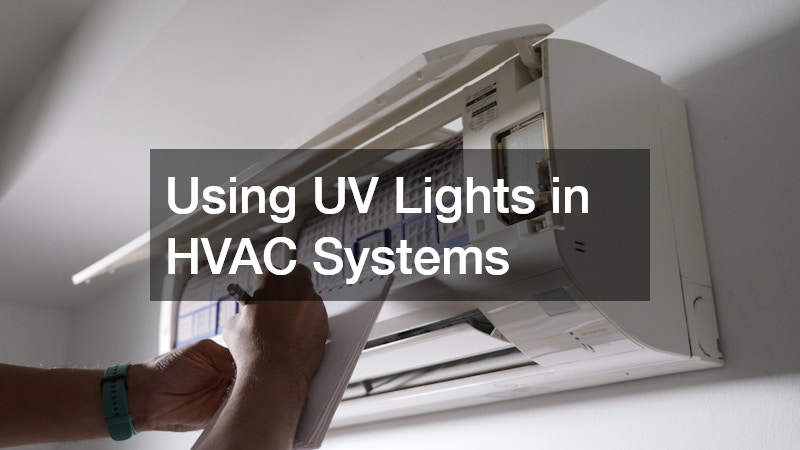
Using UV lights in HVAC systems is a proactive measure for preventing mold growth and improving indoor air quality. UV lights emit ultraviolet radiation that can kill mold spores, bacteria, and other pathogens that circulate through the HVAC system. By installing UV lights in HVAC systems, HVAC best practices can help reduce the risk of mold growth and create a healthier indoor environment.
HVAC best practices recommend that UV lights be installed near the evaporator coil or in air ducts to target mold spores and pathogens as they pass through the HVAC system. UV lights should be professionally installed and regularly inspected to ensure that they are functioning properly. By incorporating UV lights into HVAC systems, HVAC best practices can provide an added layer of protection against mold-related health issues.
In addition to using UV lights, HVAC best practices should include recommendations for regular maintenance and cleaning of HVAC components to maximize the effectiveness of UV lights. By following best practices for UV light installation and maintenance, HVAC best practices can help prevent mold growth and improve indoor air quality in buildings.
Proper HVAC maintenance and best practices are essential for preventing mold growth in HVAC systems. HVAC companies, contractors, technicians, and services play a vital role in maintaining healthy indoor environments and reducing the risk of mold-related health issues. By following best practices such as regular filter replacement, cleaning air ducts and vents, maintaining condensate drains, inspecting coils and drain pans, using dehumidifiers, promoting proper ventilation practices, sealing leaks and insulating ducts, scheduling seasonal HVAC inspections, and using UV lights, HVAC professionals can help prevent mold growth and create a safe and comfortable indoor environment for building occupants.
By prioritizing regular maintenance, educating clients about the importance of HVAC maintenance, and following best practices for mold prevention, HVAC professionals can contribute to healthier indoor environments and improve the overall quality of life for building occupants. By working together to implement HVAC best practices, we can create a cleaner, safer, and more comfortable indoor environment for everyone.
